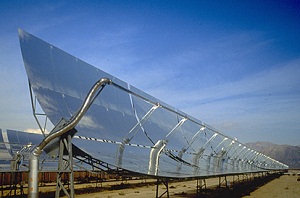California gives the go-ahead for solar projects
 Parts of the California desert are closer than ever to making effective use of their most obvious natural resource: the sun. The week of Aug. 9, the California Public Utilities Commission approved to separate power purchase contracts brokered between utilities companies and developers of solar power plants. These approvals mean that these projects must now be finalized, and financial backing found, in order for construction to begin.
Parts of the California desert are closer than ever to making effective use of their most obvious natural resource: the sun. The week of Aug. 9, the California Public Utilities Commission approved to separate power purchase contracts brokered between utilities companies and developers of solar power plants. These approvals mean that these projects must now be finalized, and financial backing found, in order for construction to begin.
In California, any solar power plants must get the approval of both the Utilities Commission and the Bureau of Land Management (BLM) before they can be built. The BLM recently instituted a fast-track policy for approval of solar projects, both to encourage renewable energy growth and to assist project developers, who want to get approvals on projects before the end of 2010, since the current federal tax grants for green energy projects may not be available next year.
The BLM recently announced its environmental impact assessments for the California desert projects, a necessary step for receiving final approval. One of these projects, the Chevron Energy Solutions Lucerne Valley Solar Project, will generate 1,000 megawatts (MW) of electricity when completed, and supply power to hundreds of thousands of families in California.
Some of these projects go beyond just using photovoltaic panels to harness the sun’s energy. One project in the San Bernadino Valley would use parabolic dishes to collect heat, driving an attached engine to make electricity. Another project by BrightSource Energy plans to build a tower of mirrors to focus heat onto liquid, turning it to steam and driving a generating turbine.
These solar power projects are part of a concerted effort by utilities companies to comply with a law stating that they must derive 20 percent of their energy from renewable sources by the end of the year. The projects approved of by the Utilities Commission are two of nine total projects that are planned for BLM land. If these projects are all completed as planned, they will provide over 41,000 MW of electricity and power 3.8 million homes in the state.



